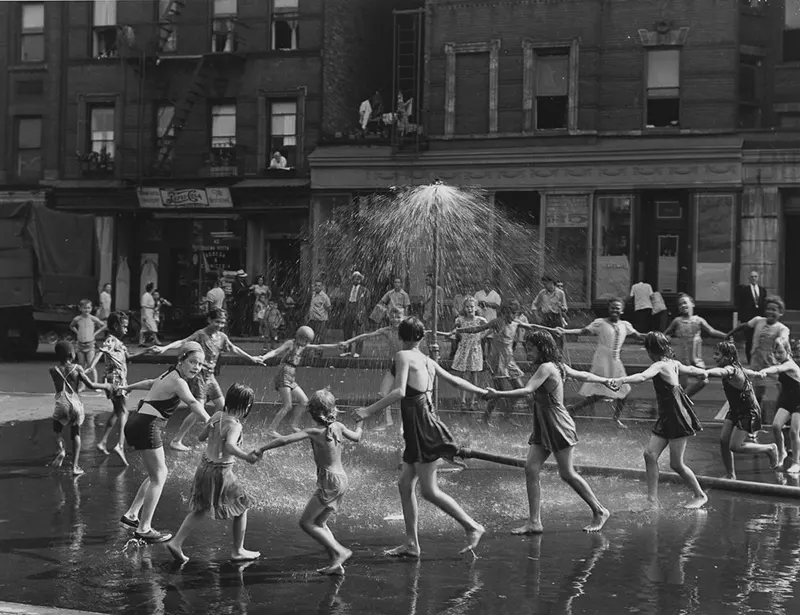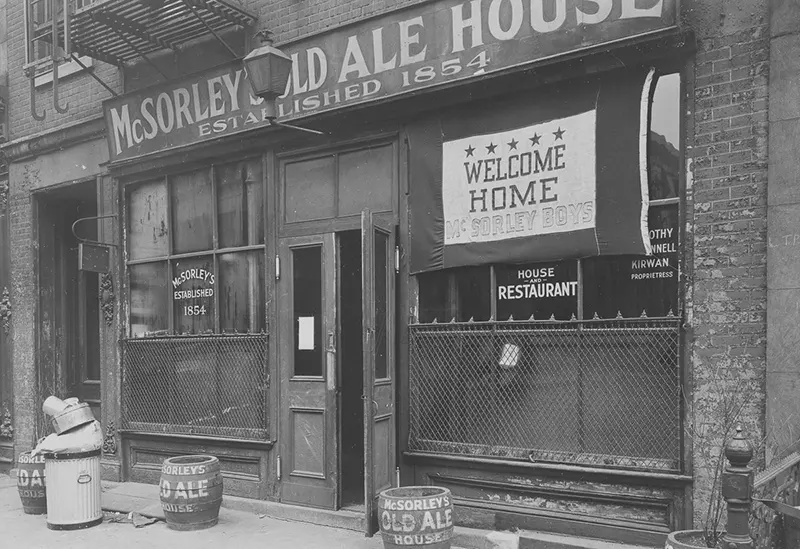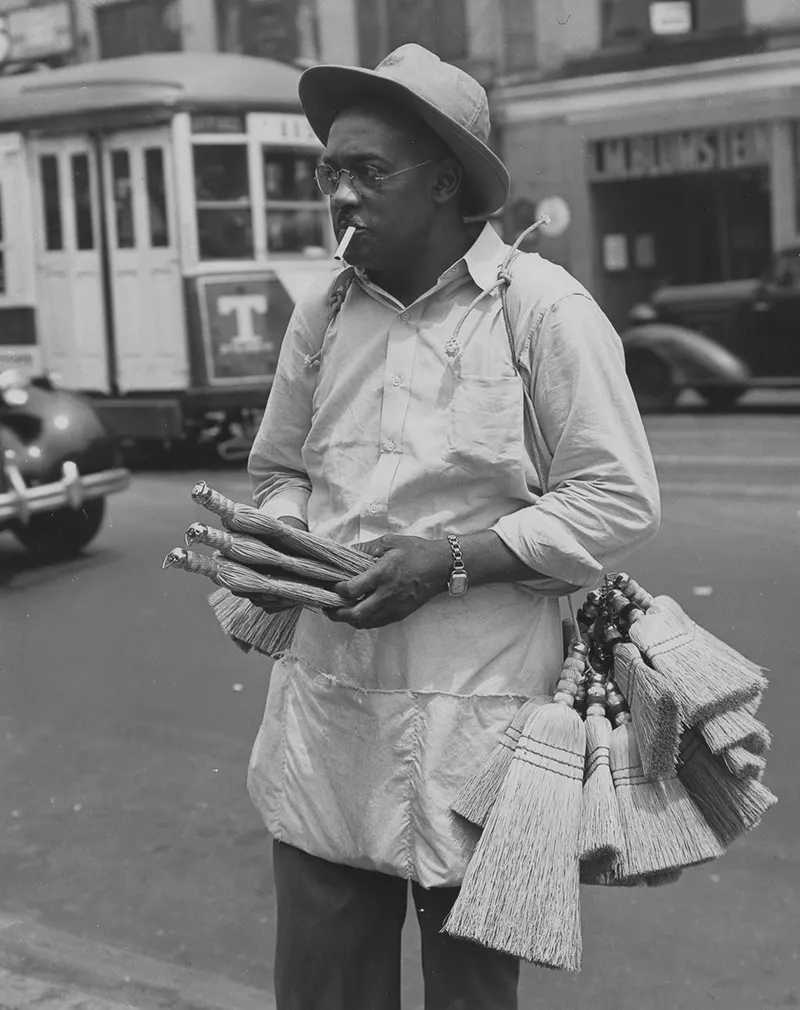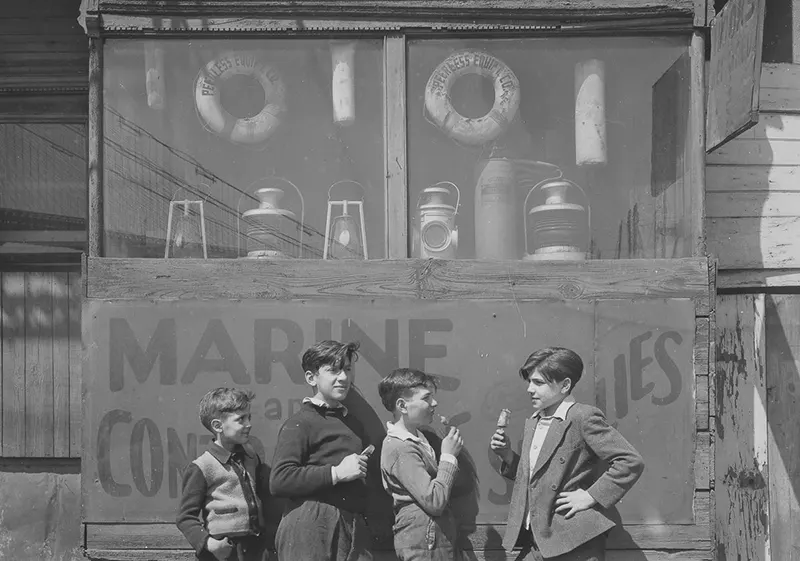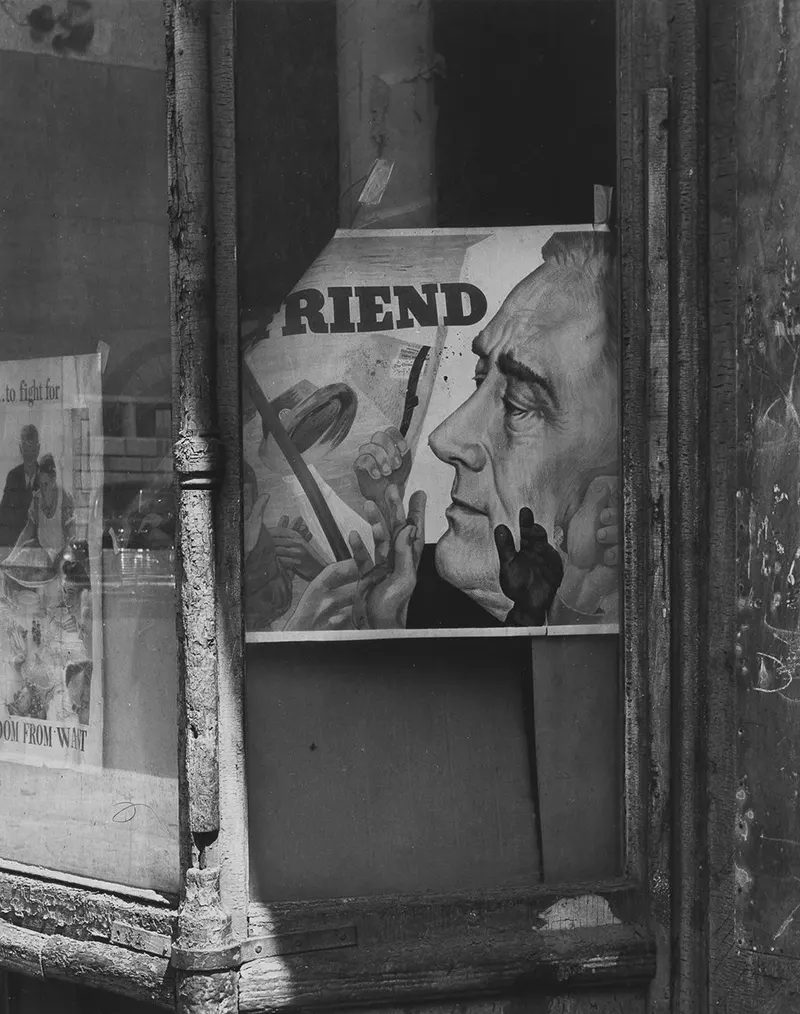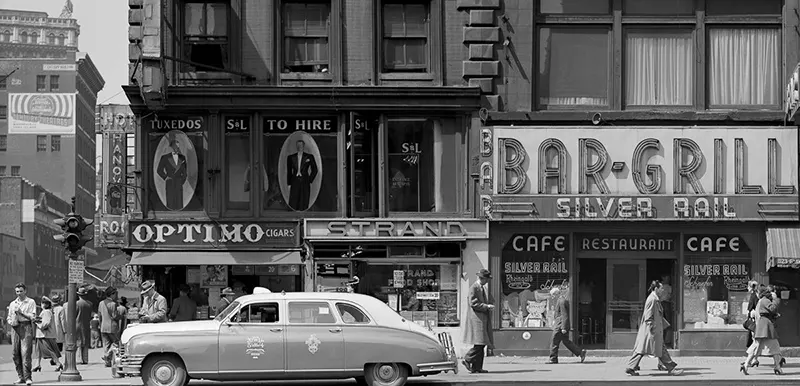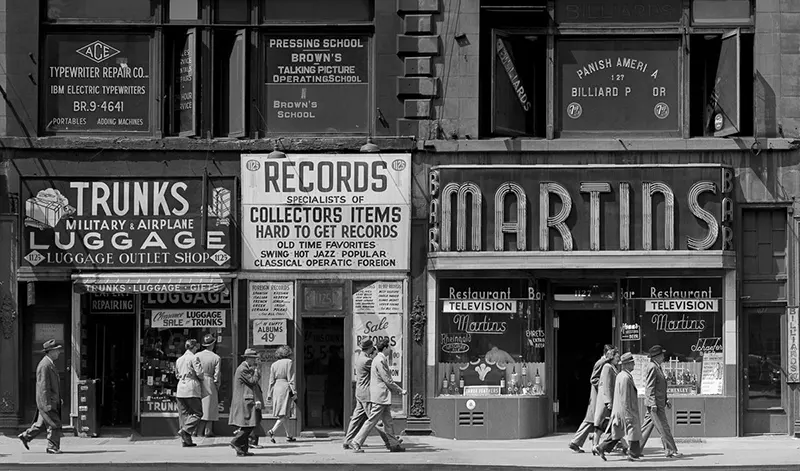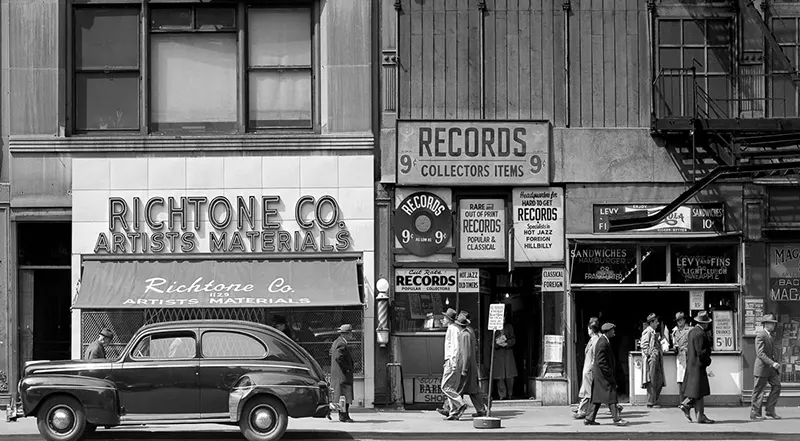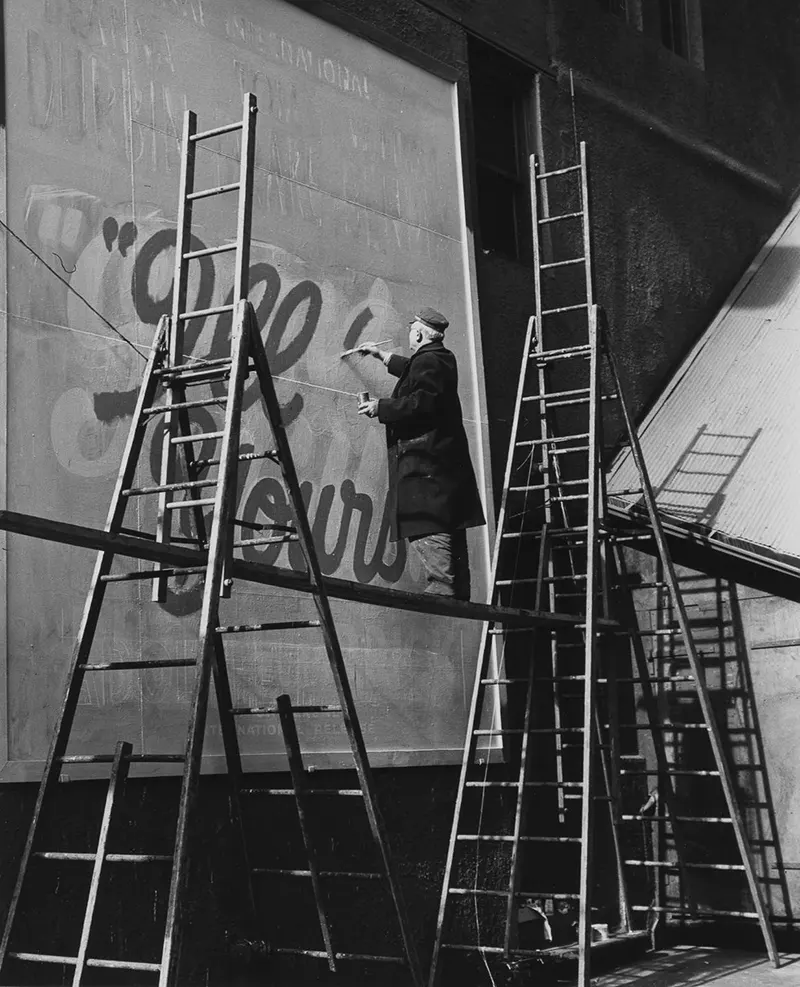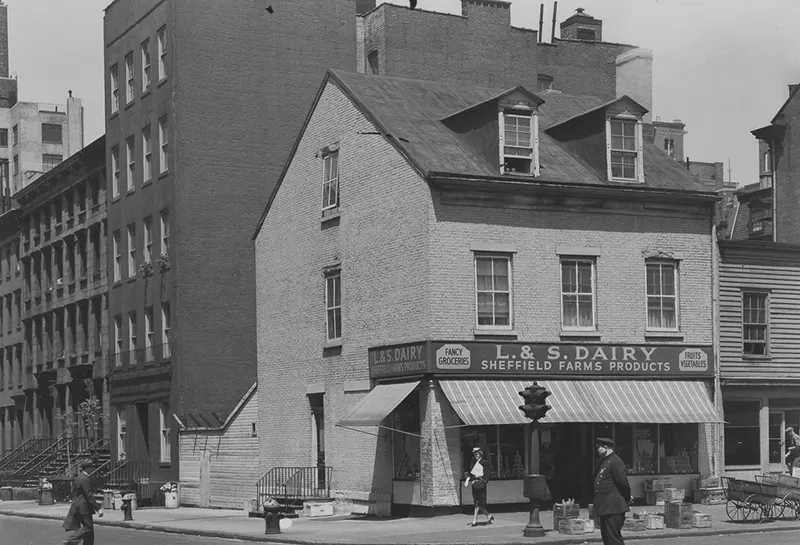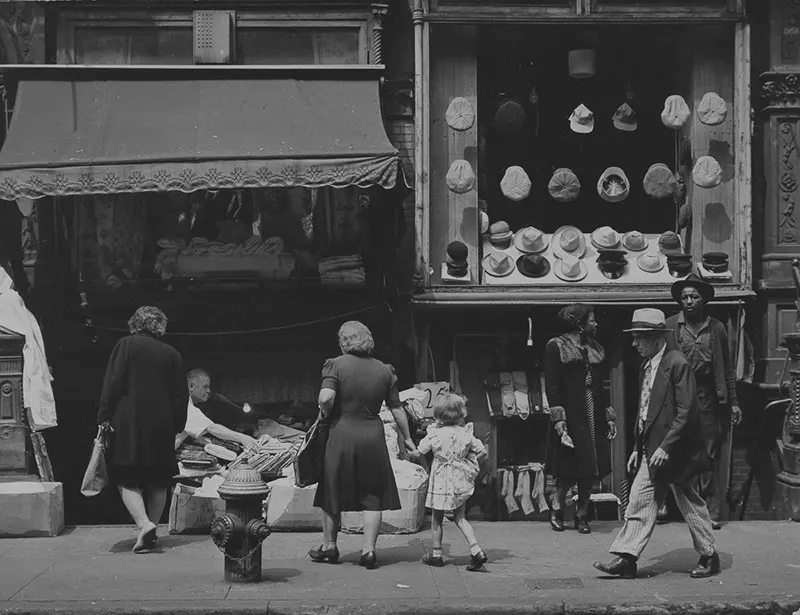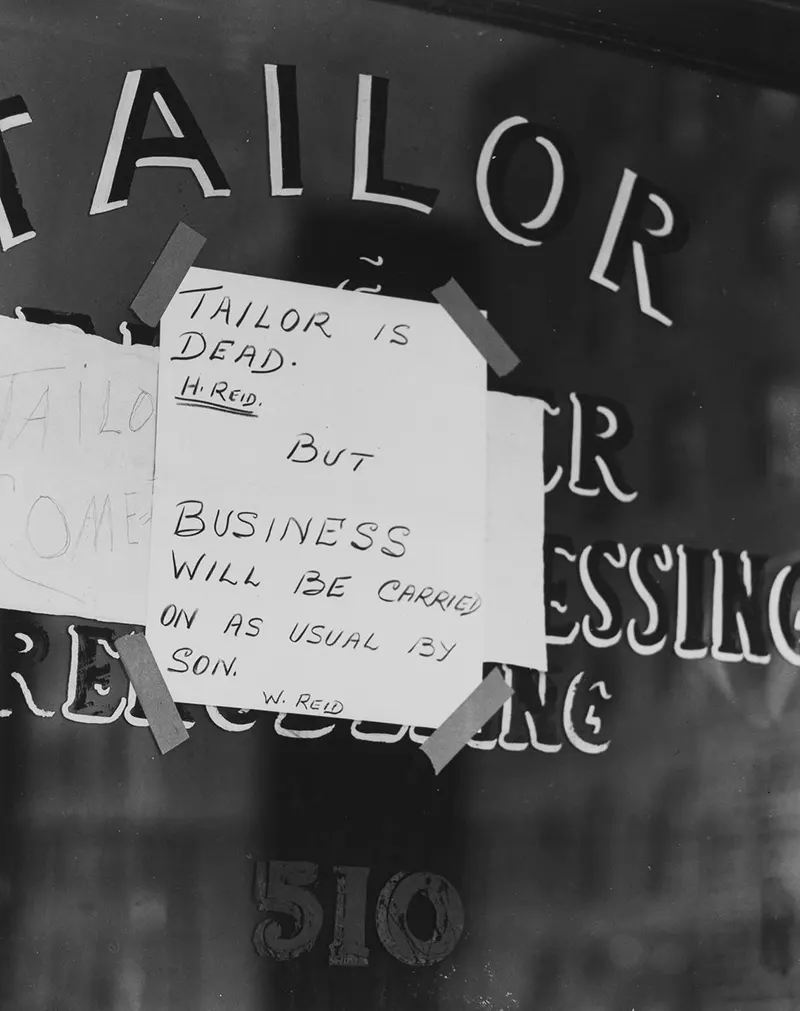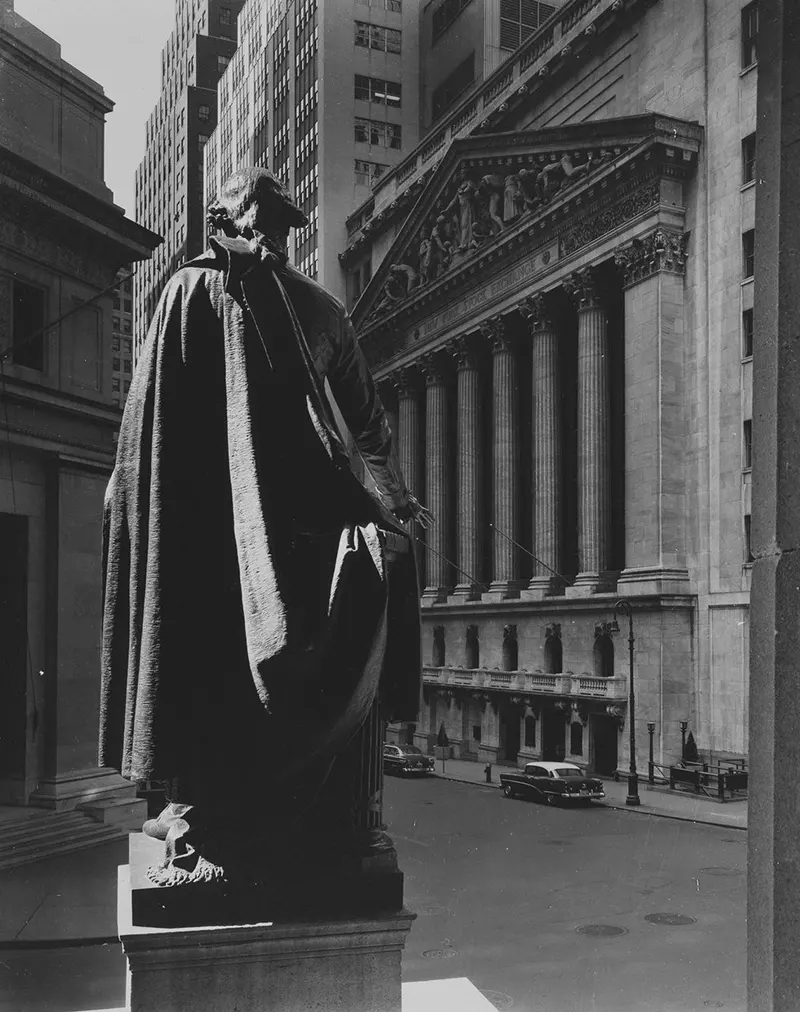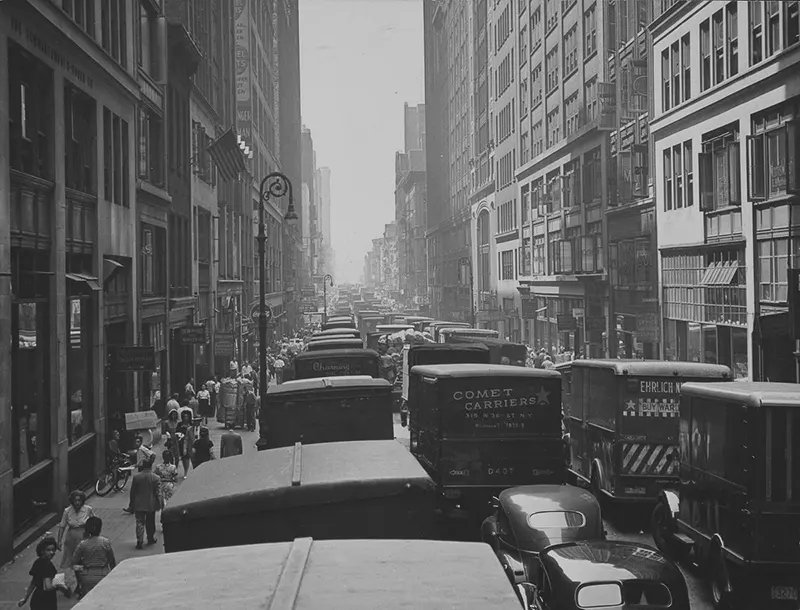With a keen fascination for the bustling humanity of Manhattan, he took his large-format camera out to the streets, capturing its people and places in all weather and seasons. Buildings, signage, vehicles, the passing throngs, isolated figures, curious eccentrics, odd corners, windows, doorways, alleyways, squares, avenues, storefronts, uptown, and downtown, from the Brooklyn Bridge to Harlem, his pictures document a rich portrait of the everyday life and architecture of New York. What set these photos apart was their “straightforward, descriptive clarity” even though they were often of familiar views. One large 10-foot–long panorama photograph which was critically acclaimed showed a section of Sixth Avenue from 43rd–44th streets which, in 1991, was seen as a “visual time capsule of the city” and was described as a “stunner.” Webb’s photos reflected the photographer’s sense of discovery and captured the times, such as photos of hand-painted banners over apartment house doors saying “Welcome Home, G.I.s”. In one photograph, Webb went to the top of the RCA Building and shot south using a backlit technique, which captured the Empire State Building at night. The best photographs, according to New York Times art critic Charles Hagen, contained the “simple geometries of urban architecture” in a “simple elegance”; Hagen thought Webb’s New York City photographs were his best. In 1946, he had his first solo exhibition of his photographs at the Museum of the City of New York. Webb fell in love with photography in 1940, after taking a master class with renowned nature photographer Ansel Adams. But while Adams was known for his stately pictures of the United States’ National Parks, Webb was more drawn to urban cityscapes and the people who brought them to life. In 1947, Webb was hired by Fortune magazine and he worked with professional photographers funded by the Standard Oil Company led by Roy Stryker the group included notable photographers such as Sol Libsohn. According to the New York Times, the team of professional photographers was “given amazingly free rein by its corporate sponsor” to produce a documentary about oil. Webb traveled to Paris in 1949 and married fellow American Lucille Minqueau. In Paris, Webb produced a “vivid record” of the city which earned him recognition. Then, Webbs moved back to New York City to live in Greenwich Village in 1952. In 1955, he was awarded a Guggenheim Fellowship to photographically record pioneer trails of early settlers of the western United States. He was hired in 1957 by the United Nations to photograph its General Assembly. He won a contract to photograph Sub–Saharan Africa in 1958. The Webbs lived in the Provence region of France, around 1970, and he continued to photograph regularly, and later lived, for a period, in Bath, England. The Webbs finally settled in the state of Maine, living in the city of Portland, based on the suggestion of a friend. In 1978, Webb won a grant from the National Endowment for the Arts and continued to live and work in Maine. Webb died in 2000 in Lewiston, Maine. In 2017, the Todd Webb Archive refurbished its website with biographical data, collection information, and a column regarding news events. In April 2017, an exhibition titled “A City Seen” opened at the Museum of the City of New York. Curated by Sean Corcoran, the exhibit was a comprehensive survey of Webb’s work in New York during the 1940s. In conjunction with the show, the book I See a City: Todd Webb’s New York, Thames & Hudson, 2017. (Photo credit: Todd Webb / Museum of the City of New York / Wikimedia Commons). Notify me of new posts by email.
Δ Subscribe
